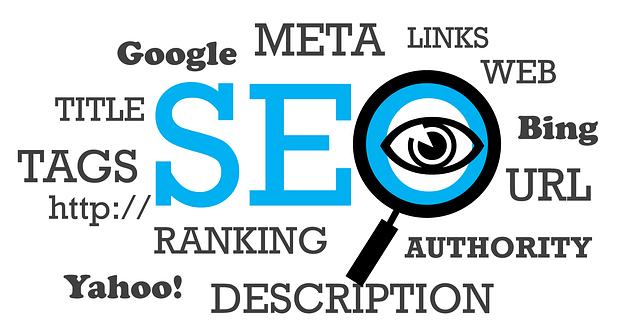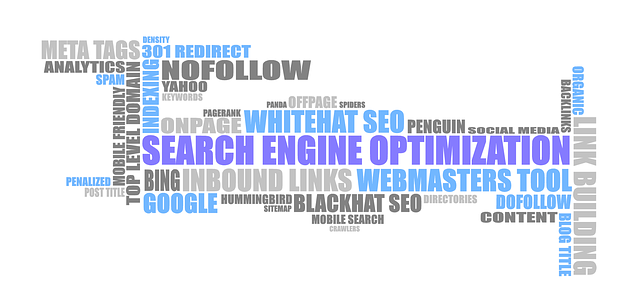Internal linking boosts On-Page SEO by enhancing user experience, distributing link equity, and guiding search engines through website content. Strategically placing links with accurate anchor text improves search engine understanding, reduces bounce rates, and increases site authority, ultimately strengthening online visibility. Measuring success via tools like Google Analytics allows for continuous optimization of internal linking strategies to enhance user engagement and SEO performance.
Internal linking is a powerful strategy to elevate your website’s performance in On-Page SEO. This essential practice connects relevant pages within your site, enhancing user experience while boosting search engine visibility. By strategically placing links, you can improve crawlability, distribute page authority, and guide users through your content.
In this comprehensive guide, we’ll explore the role of internal linking, its impact on search algorithms, and provide actionable tips to optimize your website’s structure for better On-Page SEO results.
Understanding Internal Linking Role in On-Page SEO

Internal linking plays a pivotal role in enhancing On-Page SEO. By strategically connecting relevant pages within your website, it improves user experience and signals to search engines that your content is well-structured and valuable. When users navigate through your site, internal links help them discover more related information, encouraging deeper engagement and reducing bounce rates.
This method also facilitates the distribution of link equity across your web pages. Each internal link contributes to the overall authority of the linked page, boosting its search engine rankings. Search engines crawl and index your website using these links, making it easier for them to understand the context and importance of each page within your site’s structure.
Key Factors for Effective Internal Link Strategy

An effective internal linking strategy is a cornerstone of any robust On-Page SEO approach. It involves carefully crafting anchor text that accurately represents the target page’s content, ensuring a natural flow of links across your website. The key to success lies in providing users and search engines with a clear navigation experience, allowing them to explore relevant resources effortlessly.
When implementing an internal linking strategy, focus on creating meaningful connections between pages. This means using keywords strategically within anchor text to enhance both user experience and search engine understanding. By interlinking related content, you establish a hierarchy of information, demonstrating the relevance and authority of your website to search engines, thereby boosting its overall SEO performance.
Optimizing Anchor Text for SEO Benefits

Optimizing anchor text is a crucial aspect of internal linking, playing a significant role in On-Page SEO strategies. When crafting links within your website’s content, it’s essential to use descriptive and relevant anchor text that accurately represents the target page’s content. This practice helps search engines understand the context and purpose of each link, thereby enhancing the overall authority and relevance of your web pages.
By incorporating keywords strategically into anchor text, you can further boost SEO efforts. However, it’s important to maintain a natural language flow. Over-optimization by stuffing keywords can lead to penalties from search engines. Instead, focus on creating compelling and concise anchor texts that entice users to click while providing valuable insights into the linked page’s content.
Enhancing User Experience with Strategic Internal Links

Strategic internal linking is a powerful tool within On-Page SEO that goes beyond mere optimization for search engines. By seamlessly integrating links to relevant pages within your site, you create a network that enhances user experience and encourages deeper engagement. Users benefit from quick access to related content, which keeps them on-site longer, reducing bounce rates. This technique also helps distribute link equity throughout your website, strengthening the authority of each page in the eyes of search engines.
Well-placed internal links guide users through a logical journey, fostering a more intuitive browsing experience. They provide context and relevance to the content, allowing visitors to discover new resources they may not have otherwise found. This strategic approach not only supports SEO efforts but also contributes to a user-friendly website architecture, ultimately improving overall site performance and visitor satisfaction.
Impact of Internal Links on Search Engine Crawling

Internal linking plays a pivotal role in enhancing search engine optimization (SEO) strategies, especially within the realm of on-page SEO. When a search engine crawls a website, it follows links from one page to another, much like a reader flipping through a book. Efficient internal linking guides these crawlers, allowing them to explore and index your site’s content comprehensively. This process ensures that each page receives attention, leading to better understanding of the site’s overall theme and context.
By strategically placing relevant internal links within content, websites can signal to search engines which pages are most important and related. This helps in establishing a clear information hierarchy, enabling search algorithms to rank pages accurately. Furthermore, internal linking contributes to improved user experience as it facilitates navigation, encouraging visitors to explore more of the site’s valuable resources.
Best Practices for Implementing Internal Link Structure

Implementing an effective internal linking structure is a crucial aspect of on-page SEO. Start by creating a hierarchical site architecture that organizes your content logically. This ensures users and search engines can easily navigate through your website. Categorize related pages into clusters, with each cluster focusing on a specific theme or topic. For instance, if you have an e-commerce site selling fashion accessories, you might group products like “Handbags,” “Footwear,” and “Jewelry” together.
Use anchor text strategically when creating internal links. Avoid generic links like “click here” and instead use descriptive terms that accurately represent the linked page’s content. For example, a link from an article about “Top Fashion Trends” to a page on “Trendy Handbags” provides valuable context for both users and search engines. Ensure your internal linking is natural and beneficial to the user experience, as this will positively impact your website’s SEO performance.
Measuring Success: Tracking Internal Link Performance

Measuring success is a crucial aspect of internal linking for SEO (On-Page SEO). By tracking the performance of your internal links, you can gain valuable insights into user behavior and website navigation patterns. Tools like Google Analytics and Search Console provide data on click-through rates (CTR), time spent on pages, and bounce rates associated with specific internal links. These metrics help identify high-performing links that drive traffic and engagement, as well as underperforming areas that may require optimization or restructuring.
Regularly analyzing internal link performance allows for continuous improvement in On-Page SEO strategies. You can adjust anchor text, refine link placement, and update content to enhance the overall user experience. Additionally, identifying link rot—broken or missing links—is essential to maintaining a healthy website structure that supports both search engine rankings and user navigation.
Advanced Techniques for On-Page Internal Linking

To elevate your on-page SEO, master advanced internal linking techniques that go beyond simple anchor text optimization. One powerful strategy is to create a hierarchical structure using H1, H2, and H3 tags, linking related content within each section. This not only improves user experience but also guides search engines through your content’s logical flow.
Additionally, incorporate contextual links within the body of your content. These should be naturally placed within relevant paragraphs or lists, referencing complementary articles that enhance the reader’s understanding of a particular topic. By employing these advanced on-page SEO practices, you ensure that both users and search engines can easily navigate your website’s vast information architecture.
